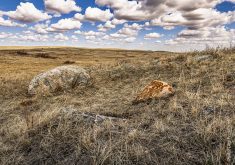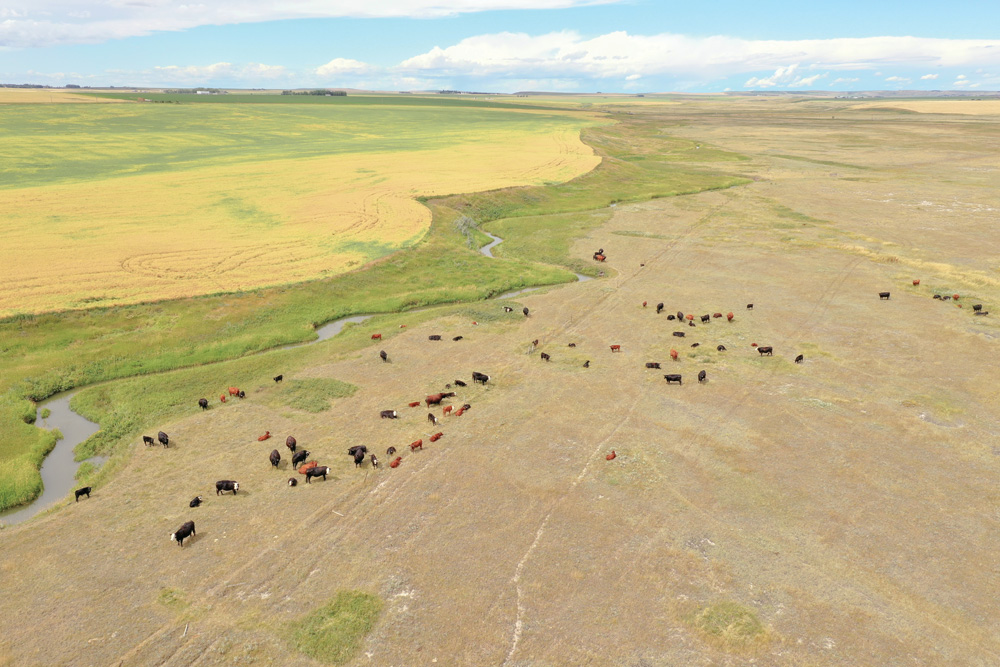The Guardians of the Grasslands documentary swept many Canadian film awards in 2019 and 2020, educating countless Canadians on the good cattle do for native grasslands.
Now, the team behind the documentary is keeping that education going with a Guardians of the Grasslands virtual game, intended to teach youth about grazing and the effect cattle have on grasslands.
Amie Peck, the stakeholder engagement manager at the Canadian Cattle Association, says the idea for the virtual game came following the success of the documentary.
Read Also

Canadian Beef Check-Off Agency reports on investments and activities
The check-off agency’s work behind the scenes is what ensures cattle check-off dollars are invested wisely, accounted for transparently and deliver measurable value back to producers and importers.
“What we wanted to do was to create more of that interactive experience,” Peck says in an interview. “So you watch Guardians of the Grasslands then you think, ‘Well, I really want to preserve native grassland, that’s so cool,’ but that doesn’t really give the average Canadian the ability to make decisions and manage a parcel of native grassland. That’s really what we were trying to accomplish with the game.”
Peck says initially the game was intended for the average Canadian, but due to funding requirements, they pivoted to target youth and students.
She says the game is intended to meet curriculum outcomes while also being easy to understand for the students.
“We made it as real as possible, but also as simple as possible,” Peck says. “It was a real experience for us because I’ve never done game development before.”
When entering the game, players pick their character and the type of land they’d like to have their paddocks on. The grass in the different paddocks may be overgrazed, resting or ready to graze.
Players must move their cattle after a certain number of days. When the cattle are moved at the right time to paddocks ready for grazing, the player earns carbon points.
As the days pass, if the player is managing the land correctly, they will attract wildlife. Players receive wildlife points for the new wildlife identified and lose them when they make errors. For example, if a black bear shows up in the game, players will lose wildlife points if they put their cattle in the paddock the bear is in.
Overall, Peck says the game takes about 17 minutes to play.
“We’re hoping to really instill in students that there’s a lot of different management decisions that farmers take into consideration,” she says.
Peck says they had to figure out what they wanted the game to entail as they created it. She says they wanted to make it as accurate as possible, while also keeping it simple and accessible for students. As a result, they had to make specific decisions, such as not including snow and only having yearlings on grass.
She says they have received great feedback from teachers on the game.
“Lots of great responses from teachers on how unique the game is, how interesting it is,” Peck says. “The ability, rather than taking students on-farm, which we still love to do and aim to do, but it’s expensive and time-consuming. But they can kind of bring the farm or ranch into the classroom.”
The initial version of the game was created with funding from the Canadian Agriculture Partnership through the Alberta government, so it was created through an Alberta lens. However, Peck says they have obtained a Sustainable Canadian Agricultural Partnership grant. Now, the game is available from B.C. to Newfoundland.
This means there are multiple variations of the game available that provide local context and local wildlife. Peck says the next step is to get the game translated into French.
“We are just in the final stages of our French translation of the game, which obviously will be for Quebec. But we’re also looking to connect it to French immersion outcomes in provinces like Ontario, New Brunswick, even Manitoba, because we’ve been told that there’ll be a really great uptake. There are not very many agriculture resources created for French immersion.”

















